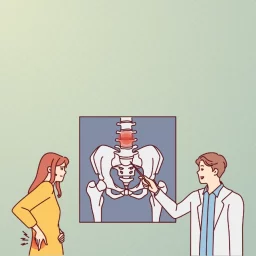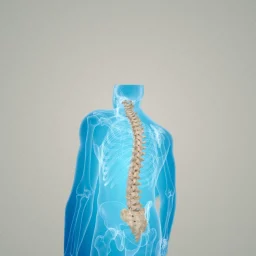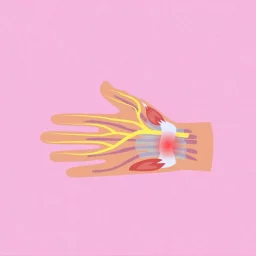If you suspect you are suffering from whiplash, your Chiropractor can help.
If you have ever been involved in a car accident, you know emotions and adrenaline run high. It is easy to ignore the resulting pain and symptoms when you are immediately worrying about safety and damage. There is a lot to think about including your car, the other person, their car, insurance information and the stress of the unfortunate situation.
A whiplash injury (also referred to as WAD- whiplash-associated disorder) can occur when a vehicle collides with another and the impact of the crash causes the head and neck of the driver or passengers to be suddenly and forcefully thrown back and forth. This causes the soft tissues and ligaments in the neck to be stretched beyond their normal range of movement. Neck muscles can be very tender and neck movement can be quite limited. A whiplash injury can occur at low speeds, as it is the sudden, abrupt impact of the collision that causes the neck injury.
Whiplash can occur from other causes and not just car accidents. It can be an after-effect from falling down stairs or having something fall on your head. Whiplash can also be a result of a tackle or body check, which can occur in contact sports.
Symptoms of whiplash are not always immediately apparent following an accident and can take hours, days, or even weeks to appear. Regardless of how long injury symptoms take to come on, they should be addressed immediately to advise the best course of treatment and to ensure a speedy recovery.
Understanding Whiplash
Whiplash may result in tender muscles (WAD I) or limited neck movement (WAD II). Whiplash symptoms include headache, dizziness, loss of mobility in the neck and shoulders, upper back pain, neck pain and even chest pain.
Fortunately, most whiplash injuries are not serious and heal fully. Signs of serious neck injury, such as fracture, are usually evident in early assessments and require immediate medical attention. Chiropractors are qualified healthcare professionals who can properly assess whiplash injuries, provide education and recommend the best treatment options. If you have suffered a whiplash injury, knowing more about the condition can help you participate in your own recovery.
Pain, stiffness and other symptoms of WAD I or II typically start within the first two days after an accident. A later onset of symptoms does not necessarily indicate a more serious injury. Many people have minimal to no disruption of their normal activities after a whiplash injury. Those affected with pain and reduced range of motion usually improve after a few days or weeks while returning safely to their regular activities of daily living.
Whiplash Treatment
Research shows that successful whiplash treatment involves patient cooperation and active efforts to resume daily activity. A treating healthcare professional, like your chiropractor, will assess your whiplash injuries, and discuss options for pain relief and treatment. Although prescription medications are usually unnecessary, temporary use of mild over-the-counter medication may be suggested by your family physician, in addition to ice or heat.
Daily Activity and Whiplash
Cervical collars, or neck braces, are generally not recommended after an accident as they prevent movement and may add to stiffness and pain in the neck. Research tells us that early mobilization is best as soon as possible. Continuing normal activities is an important factor in full recovery, and can be assisted by active treatment and exercises recommended by your chiropractor.
Avoiding Chronic Pain
Some whiplash sufferers are reluctant to return to activity, fearing it will make the injury worse. Pain and sensitivity may cause some to overestimate the extent of their injuries. Staying active and connected with family, friends and co-workers are important steps on the road to recovery. Social withdrawal can contribute to depression and the development of chronic pain. If you are discouraged or depressed about your recovery, talk to your health professional.
Tips for Return to Activity
- Avoid sitting in one position for prolonged periods of time
- Periodically stand and stretch
- When seated, ensure the upper part of your arms rests close to your body, and that your back and feet are well supported.
- Adjust your car seat when driving so that your elbows and knees are loosely bent.
- When shopping or carrying items, use a cart or hold things close to the body for support.
- Avoid contact sports or strenuous exercise for the first few weeks to prevent further injury. Ask your chiropractor about less strenuous alternatives that could be right for you.
- To ensure a comfortable night’s rest, your pillow may require adjusting to ensure adequate support for your neck and head while sleeping.
Preventing Another Whiplash Injury
Properly adjusting the height of your car seat headrest can help prevent or minimize a whiplash injury in the event of an accident. Ideally, the top of the head should be in line with the top of the headrest and there should be no more than 2-5 cm between the back of the head and the headrest.
If you or someone you know has been in a motor vehicle accident, do not ignore the neck pain that may ensue. Schedule a comprehensive examination with your chiropractor and get the information you need for a quick and full recovery. Visit or call us at our Byward Clinic location at 613-860-8600 or our Glebe Clinic location at 613-237-9000. At CURAVITA, we offer patient-centred collaborative care between our team of chiropractors, physiotherapists and massage therapists.
Byward Market
Email: info.byward@curavita.com
URL: https://byward.curavita.com
Glebe
Email: info.glebe@curavita.com
URL: https://glebe.curavita.com
















[…] not ignore whiplash-type injuries. Get examined by a healthcare professional if you experience any of these symptoms. […]
[…] physiotherapist or massage therapist is the presence of pain. Whether it is a pain in the neck, the back, the shoulder or the knee, pain drives their decision to consult. Pain can be a […]